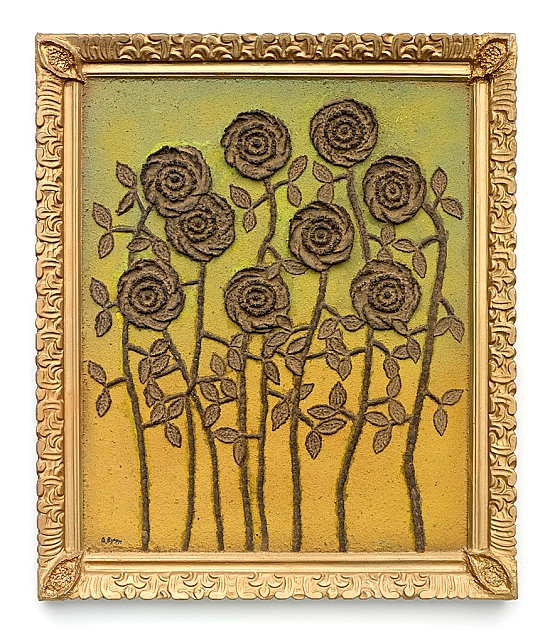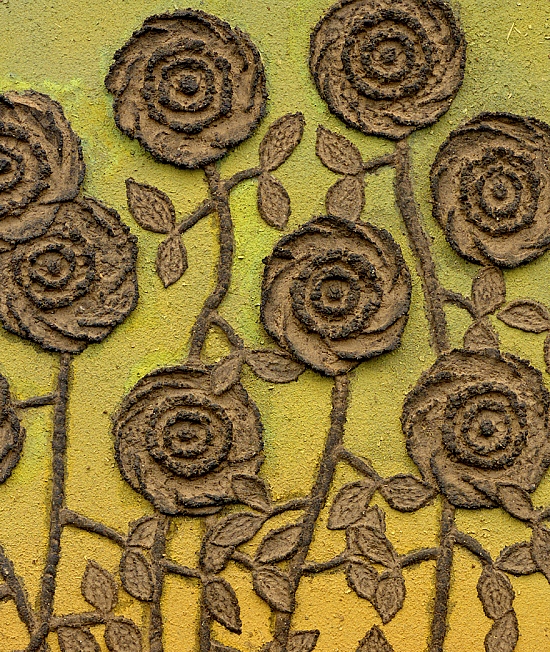Archie Byron was a childhood playmate of Martin Luther King Jr., but never marched with him during the civil rights era, stating that he would not do so unless he could carry his shotgun. He later ran a number of businesses, including a gun-repair shop. Byron’s first artworks were fashioned from found roots and branches, but his approach changed when he noticed the sawdust residue on the floor of the gun shop and thought, “There’s a beauty there that shouldn’t be wasted.” Mixing the sawdust with glue and water to make a paste, he began to sculpt bas-reliefs that he displayed in recycled picture frames. In Black Roses, Byron reinterpreted the traditional still-life genre through a highly personal lens. The anthropomorphic roses, with their black heads and petal hands, epitomize the “Black is Beautiful” movement. —Lauren Palmor

